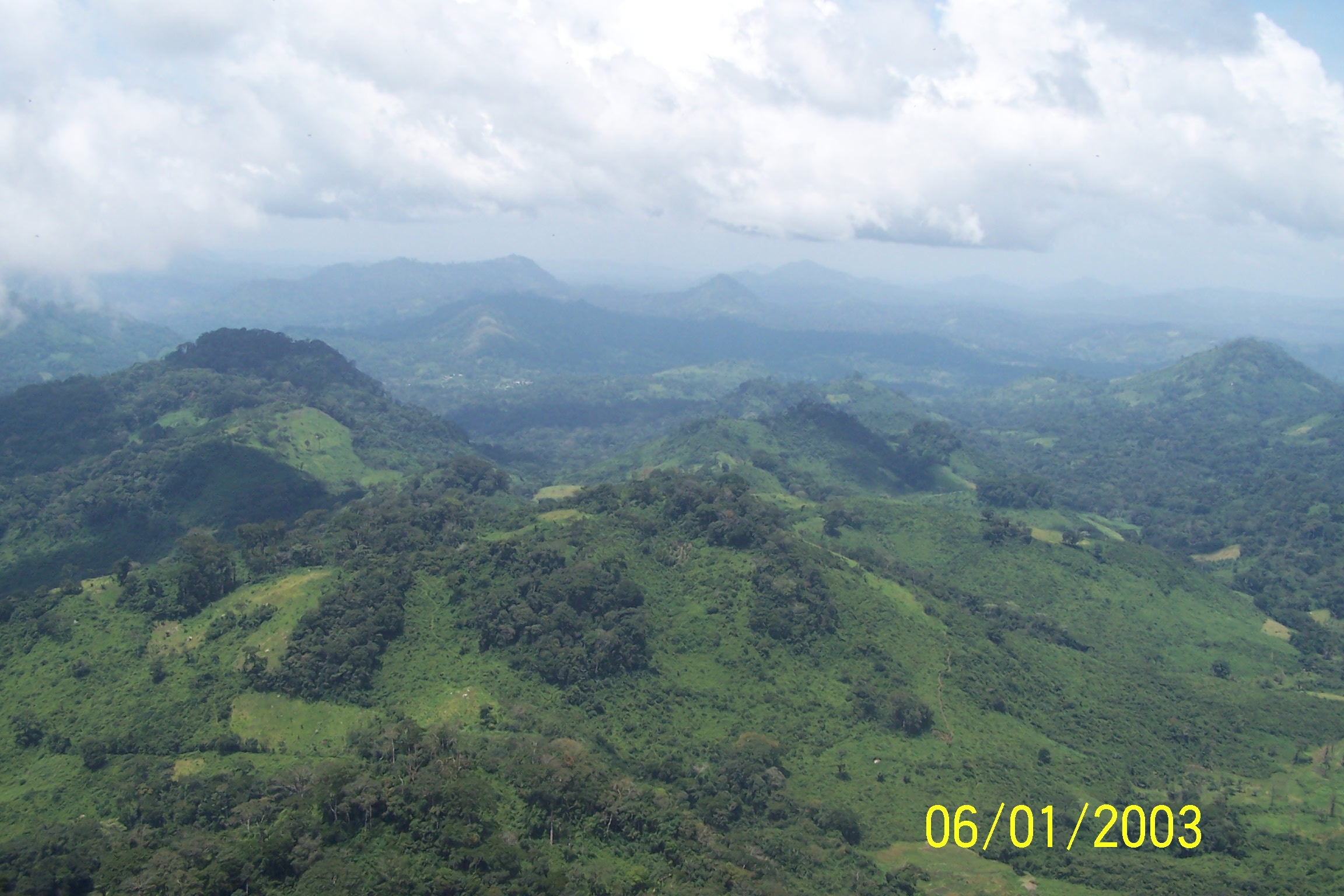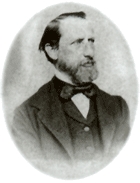|
Man, Ivory Coast
Man is a city in western Ivory Coast. It is the seat of both Montagnes District and Tonkpi Region. It is also a commune and the seat of and a sub-prefecture of Man Department. In the 2014 census, the city had a population of 149,041, making it the eighth-largest city in the country. History In November 2002, during conflict between government and rebel forces, the former rebel group Mouvement patriotique de Côte d'Ivoire (MPCI) held Man and the towns of Danané, Toulepleu, and Bloléquin. Geography Man is part of Montagnes District and is an important market town lying between mountains, including Mount Toura and Mount Tonkoui (the two highest in the nation), and La Dent de Man, popular with hikers and most recently, rock climbers. Climate Man has a tropical savanna climate (Köppen ''Aw''). Economy Man is an agricultural region, with many cocoa, rice, coffee, cassava, banana ( plantain), and soybean plantations. The area is the largest producer of coffee in the Iv ... [...More Info...] [...Related Items...] OR: [Wikipedia] [Google] [Baidu] |
Sub-prefectures Of Ivory Coast
Sub-prefectures of Ivory Coast () are the fourth-level administrative subdivisions of the country. There are currently 510 sub-prefectures. They were created in 2011, when the administrative subdivisions of Ivory Coast were reorganised. In Ivory Coast, there are 14 first-level districts (including two autonomous districts) sub-divided into 31 regions, which are sub-divided into 108 departments (), which are further sub-divided into 510 sub-prefectures. The sub-prefectures contain more than 8000 villages nationwide. Where needed, multiple villages have been combined into 197 communes. The two autonomous districts are not divided into regions, but they do contain one or more departments as well as sub-prefectures and communes. Two areas of the country are not subdivided into sub-prefectures. First, the urban portion the Autonomous District of Abidjan—constituting Abidjan City proper—contains no sub-prefectures, only communes, although the more rural areas of the Autonomou ... [...More Info...] [...Related Items...] OR: [Wikipedia] [Google] [Baidu] |
Mount Toura
The Monts du Toura, also known as the Toura Mountains, are a range of mountains rising to 1300 metres in elevation, extending westward across Ivory Coast from the Sassandra River to the border with Liberia and Guinea. Mont Nimba, at the western end of the range, reaches 1,752 m.U.S. Library of Congress Country Studies - Ivory Coast accessed 25 December 2010. The Mont Sangbé National Park, one of the world's principal national parks,Encyclopædia Britannica at Universitat ... [...More Info...] [...Related Items...] OR: [Wikipedia] [Google] [Baidu] |
Fabrics
Textile is an umbrella term that includes various fiber-based materials, including fibers, yarns, filaments, threads, and different types of fabric. At first, the word "textiles" only referred to woven fabrics. However, weaving is not the only manufacturing method, and many other methods were later developed to form textile structures based on their intended use. Knitting and non-woven are other popular types of fabric manufacturing. In the contemporary world, textiles satisfy the material needs for versatile applications, from simple daily clothing to bulletproof jackets, spacesuits, and doctor's gowns. Textiles are divided into two groups: consumer textiles for domestic purposes and technical textiles. In consumer textiles, aesthetics and comfort are the most important factors, while in technical textiles, functional properties are the priority. The durability of textiles is an important property, with common cotton or blend garments (such as t-shirts) able to l ... [...More Info...] [...Related Items...] OR: [Wikipedia] [Google] [Baidu] |
Market (place)
A marketplace, market place, or just market, is a location where people regularly gather for the purchase and sale of provisions, livestock, and other goods. In different parts of the world, a marketplace may be described as a ''souk'' (from Arabic language, Arabic), ''bazaar'' (from Farsi language, Persian), a fixed ''mercado (other), mercado'' (Spanish language, Spanish), itinerant ''tianguis'' (Mexico), or ''palengke'' (Philippines). Some markets operate daily and are said to be ''permanent'' markets while others are held once a week or on less frequent specified days such as festival days and are said to be ''periodic markets.'' The form that a market adopts depends on its locality's population, culture, ambient, and geographic conditions. The term ''market'' covers many types of trading, such as market squares, market halls, food halls, and their different varieties. Thus marketplaces can be both outdoors and indoors, and in the modern world, online marketplaces. ... [...More Info...] [...Related Items...] OR: [Wikipedia] [Google] [Baidu] |
Nestlé
Nestlé S.A. ( ) is a Swiss multinational food and drink processing conglomerate corporation headquartered in Vevey, Switzerland. It has been the largest publicly held food company in the world, measured by revenue and other metrics, since 2014."Nestlé's Brabeck: We have a 'huge advantage' over big pharma in creating medical foods" , CNN Money, 1 April 2011 It ranked No. 64 on the Fortune Global 500, ''Fortune'' Global 500 in 2017. In 2023, the company was ranked 50th in the Forbes Global 2000, ''Forbes'' Global 2000. Nestlé's products include coffee and tea, candy and confectionery, bottled water, infant formula and baby food, Dairy product, dairy products and ice cream, frozen foods, breakfast cere ... [...More Info...] [...Related Items...] OR: [Wikipedia] [Google] [Baidu] |
Plantain (cooking)
Cooking bananas are a group of banana cultivars in the genus '' Musa'' whose fruits are generally used in cooking. They are not eaten raw and are generally starchy. Many cooking bananas are referred to as plantains or ' green bananas'. In botanical usage, the term "plantain" is used only for true plantains, while other starchy cultivars used for cooking are called "cooking bananas". True plantains are cooking cultivars belonging to the AAB group, while cooking bananas are any cooking cultivar belonging to the AAB, AAA, ABB, or BBB groups. The currently accepted scientific name for all such cultivars in these groups is ''Musa'' × ''paradisiaca''. Fe'i bananas (''Musa'' × ''troglodytarum'') from the Pacific Islands are often eaten roasted or boiled, and are thus informally referred to as "mountain plantains", but they do not belong to any of the species from which all modern banana cultivars are descended. Cooking bananas are a major food staple in West and Central Africa, the ... [...More Info...] [...Related Items...] OR: [Wikipedia] [Google] [Baidu] |
Cassava
''Manihot esculenta'', common name, commonly called cassava, manioc, or yuca (among numerous regional names), is a woody shrub of the spurge family, Euphorbiaceae, native to South America, from Brazil, Paraguay and parts of the Andes. Although a perennial plant, cassava is extensively cultivated in tropical and subtropical regions as an annual crop for its edible starchy tuberous root. Cassava is predominantly consumed in boiled form, but substantial quantities are processed to extract cassava starch, called tapioca, which is used for food, animal feed, and industrial purposes. The Brazilian , and the related ''garri'' of West Africa, is an edible coarse flour obtained by grating cassava roots, pressing moisture off the obtained grated pulp, and finally drying it (and roasting in the case of both and ''garri''). Cassava is the third-largest source of carbohydrates in food in the tropics, after rice and maize, making it an important staple food, staple; more than 500 million pe ... [...More Info...] [...Related Items...] OR: [Wikipedia] [Google] [Baidu] |
Theobroma Cacao
''Theobroma cacao'' (cacao tree or cocoa tree) is a small ( tall) evergreen tree in the Malvaceae family. Its seedscocoa beansare used to make chocolate liquor, cocoa solids, cocoa butter and chocolate. Although the tree is native to the tropics of the Americas, the largest producer of cocoa beans in 2022 was Ivory Coast. The plant's leaf, leaves are alternate, entire, unlobed, long and broad. Description Flowers The flowers are produced in clusters directly on the Trunk (botany), trunk and older branches; this is known as cauliflory. The flowers are small, diameter, with pink Calyx (botany), calyx. The floral formula, used to represent the structure of a flower using numbers, is ✶ K5 C5 A(5°+52) (5). While many of the world's flowers are pollinated by bees (Hymenoptera) or Butterfly, butterflies/moths (Lepidoptera), cacao flowers are pollinated by tiny flies, ''Forcipomyia'' biting midges. Using the natural pollinator ''Forcipomyia'' midges produced more fruit tha ... [...More Info...] [...Related Items...] OR: [Wikipedia] [Google] [Baidu] |
National Oceanic And Atmospheric Administration
The National Oceanic and Atmospheric Administration (NOAA ) is an American scientific and regulatory agency charged with Weather forecasting, forecasting weather, monitoring oceanic and atmospheric conditions, Hydrography, charting the seas, conducting deep-sea exploration, and managing fishing and protection of marine mammals and endangered species in the US exclusive economic zone. The agency is part of the United States Department of Commerce and is headquartered in Silver Spring, Maryland. History NOAA traces its history back to multiple agencies, some of which are among the earliest in the federal government: * United States Coast and Geodetic Survey, formed in 1807 * National Weather Service, Weather Bureau of the United States, formed in 1870 * United States Fish Commission, Bureau of Commercial Fisheries, formed in 1871 (research fleet only) * NOAA Commissioned Corps, Coast and Geodetic Survey Corps, formed in 1917 The most direct predecessor of NOAA was the Enviro ... [...More Info...] [...Related Items...] OR: [Wikipedia] [Google] [Baidu] |
Köppen Climate Classification
The Köppen climate classification divides Earth climates into five main climate groups, with each group being divided based on patterns of seasonal precipitation and temperature. The five main groups are ''A'' (tropical), ''B'' (arid), ''C'' (temperate), ''D'' (continental), and ''E'' (polar). Each group and subgroup is represented by a letter. All climates are assigned a main group (the first letter). All climates except for those in the ''E'' group are assigned a seasonal precipitation subgroup (the second letter). For example, ''Af'' indicates a tropical rainforest climate. The system assigns a temperature subgroup for all groups other than those in the ''A'' group, indicated by the third letter for climates in ''B'', ''C'', ''D'', and the second letter for climates in ''E''. Other examples include: ''Cfb'' indicating an oceanic climate with warm summers as indicated by the ending ''b.'', while ''Dwb'' indicates a semi-Monsoon continental climate, monsoonal continental climate ... [...More Info...] [...Related Items...] OR: [Wikipedia] [Google] [Baidu] |
Tropical Savanna Climate
Tropical savanna climate or tropical wet and dry climate is a tropical climate sub-type that corresponds to the Köppen climate classification categories ''Aw'' (for a dry "winter") and ''As'' (for a dry "summer"). The driest month has less than of precipitation and also less than 100-\left (\frac \right)mm of precipitation. This latter fact is in a direct contrast to a tropical monsoon climate, whose driest month sees less than of precipitation but has ''more'' than 100-\left (\frac \right) of precipitation. In essence, a tropical savanna climate tends to either see less overall rainfall than a tropical monsoon climate or have more pronounced dry season(s). It is impossible for a tropical savanna climate to have more than as such would result in a negative value in that equation. In tropical savanna climates, the dry season can become severe, and often drought conditions prevail during the course of the year. Tropical savanna climates often feature tree-studded grasslands due ... [...More Info...] [...Related Items...] OR: [Wikipedia] [Google] [Baidu] |









